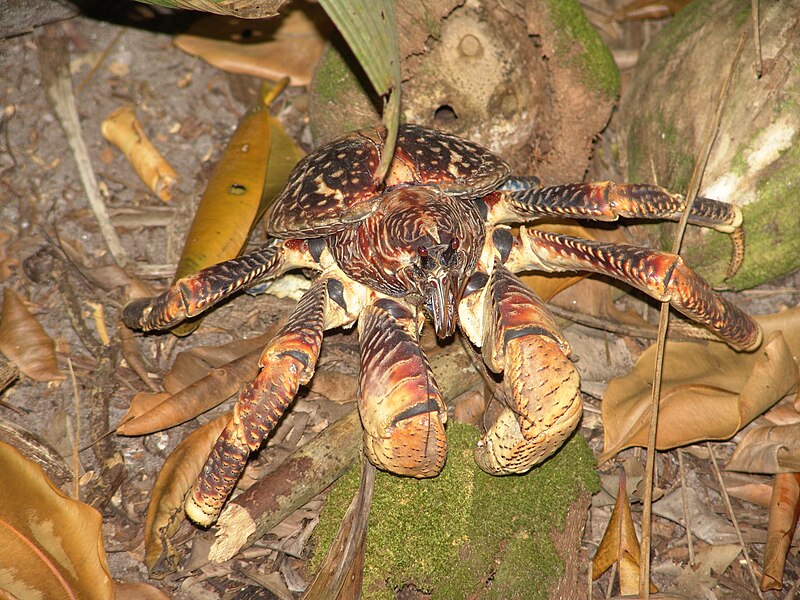Hello ladies and gents this is the Viking telling you that today we are talking about
COCONUT CRAB
The Coconut Crab is the largest terrestrial arthropod, and indeed terrestrial invertebrate, in the world; reports about its size vary, but most sources give a body length up to 40 cm (16 in), a weight up to 4.1 kg (9.0 lb), and a leg span more than 0.91 m (3.0 ft), with males generally being larger than females The carapace may reach a length of 78 mm (3.1 in), and a width up to 200 mm (7.9 in).
The body of the coconut crab is, like that of all decapods, divided into a front section (cephalothorax), which has 10 legs, and an abdomen. The front-most pair of legs has large chelae (claws), with the left being larger than the right. The next two pairs, as with other hermit crabs, are large, powerful walking legs with pointed tips, which allow coconut crabs to climb vertical or overhanging surfaces.
The fourth pair of legs is smaller with tweezer-like chelae at the end, allowing young coconut crabs to grip the inside of a shell or coconut husk to carry for protection; adults use this pair for walking and climbing. The last pair of legs is very small and is used by females to tend their eggs, and by the males in mating.
This last pair of legs is usually held inside the carapace, in the cavity containing the breathing organs. Some difference in color occurs between the animals found on different islands, ranging from orange-red to purplish blue in most regions, blue is the predominant color, but in some places, including the Seychelles, most individuals are red.
Although B. latro is a derived type of hermit crab, only the juveniles use salvaged snail shells to protect their soft abdomens, and adolescents sometimes use broken coconut shells for that purpose. Unlike other hermit crabs, the adult coconut crabs do not carry shells, but instead harden their abdominal terga by depositing chitin and chalk. Not being constrained by the physical confines of living in a shell allows this species to grow much larger than other hermit crabs in the family Coenobitidae. Like most true crabs, B. latro bends its tail underneath its body for protection.
The hardened abdomen protects the coconut crab and reduces water loss on land, but must be moulted periodically. Adults moult annually, and dig a burrow up to 1 m (3 ft 3 in) long in which to hide while vulnerable. It remains in the burrow for 3 to 16 weeks, depending on the size of the animal. After moulting, 1 to 3 weeks are needed for the exoskeleton to harden, depending on the animal's size, during which time the animal's body is soft and vulnerable, and it stays hidden for protection
And as always have a chilled day from the viking.

Comments
Post a Comment